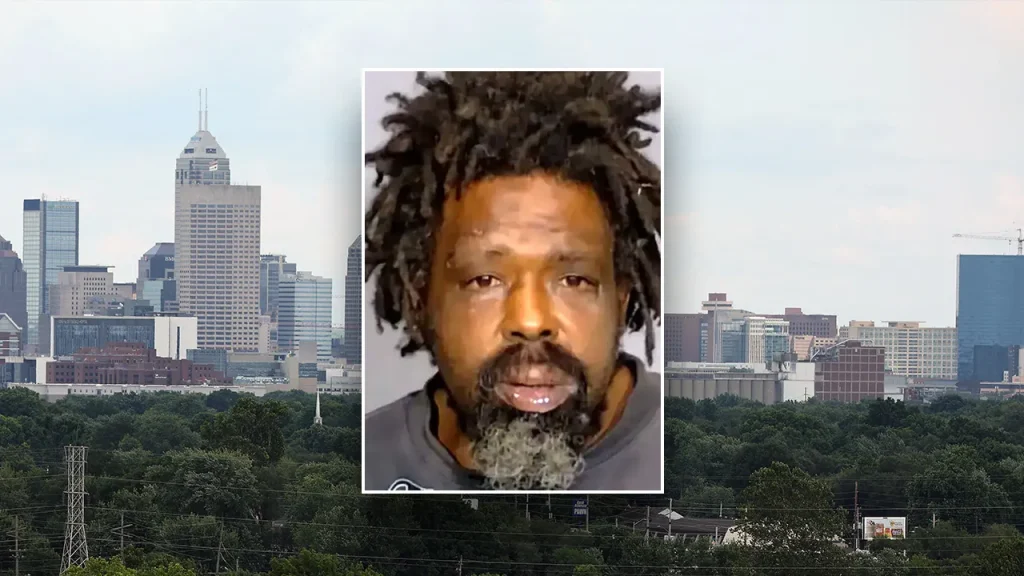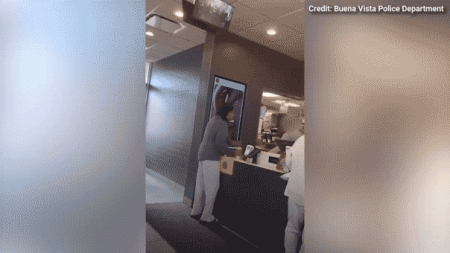Revolving Door Justice: The Case of Courtney Boose and America’s Repeat Offender Crisis
The recent arrest of 41-year-old Indiana resident Courtney Boose has sparked national outrage, bringing into sharp focus the failures of America’s criminal justice system to adequately address habitual offenders. Boose, accused of stabbing a 69-year-old man at a gas station, has amassed a staggering 99 arrests throughout his criminal career. Despite this extensive record spanning over two decades—with charges ranging from theft and trespassing to battery—court documents reveal a shocking truth: Boose has never served a single day in state prison. Instead, his punishments have typically consisted of short county jail terms or credit for time already served while awaiting trial. This case has become emblematic of what critics describe as a “catch-and-release” approach to criminal justice that fails to protect communities or rehabilitate offenders.
The details of Boose’s criminal history paint a troubling portrait of ineffective intervention. Court records show dozens of convictions and dismissals, primarily for low-level felonies and misdemeanors. In a 2019 case, a charge of battery resulting in bodily injury was dismissed as part of a plea deal, with Boose receiving just two months behind bars for misdemeanor theft. Similarly, felony trespass convictions in both 2020 and 2022 resulted in sentences of time already served in county jail. Perhaps most concerning in his current case, prosecutors recently downgraded the charge from attempted murder to aggravated battery, reducing his potential maximum sentence from 40 years to 16 years. While he currently remains in Marion County Jail on a $50,000 bond, the pattern of lenient treatment has Indianapolis Fraternal Order of Police President Rick Snyder questioning the system: “What’s the number of times where somebody in a black robe says ‘you know what, I don’t think this guy is getting it?'”
Boose’s situation isn’t unique but rather represents a nationwide pattern that has communities increasingly frustrated with criminal justice policies that seem to prioritize offender leniency over public safety. Snyder articulated this frustration when he stated on a local radio show, “This is exactly what we’ve been warning about. You’ve got someone arrested 99 times, accused now of stabbing an elderly man, and he’s never seen prison.” The sentiment reflects growing concern that repeat offenders “are being turned back onto the streets faster than officers can arrest them,” creating a revolving door that neither deters criminal behavior nor addresses its root causes. The justice system appears caught in a paradox—attempting to avoid excessive incarceration while simultaneously failing to implement effective alternatives that would prevent reoffending.
Similar controversies have erupted across the country, including high-profile cases like that of Troy McAlister in San Francisco. McAlister, with 91 prior felonies, allegedly drove a stolen car while intoxicated in December 2020, running a red light and killing two pedestrians—27-year-old Hanako Abe and 60-year-old Elizabeth Platt. The tragedy occurred while McAlister was on parole. More recently, his attempt to swap prison time for drug rehabilitation sparked public protests, with demonstrators carrying signs reading “91 felonies, 2 deaths, No more chances” and “Judge Begert chooses politics over public safety.” Scotty Jacobs, representing a community advocacy group, captured the public sentiment when he told local media, “We don’t think that someone should be given infinite chances to ultimately correct course.”
These cases force difficult conversations about the balance between compassion and accountability in criminal justice reform. Progressive policies designed to reduce mass incarceration and offer second chances have valid intentions—addressing racial disparities, avoiding the warehousing of non-violent offenders, and recognizing that traditional incarceration often fails to address underlying issues like mental illness and substance abuse. However, when these policies result in individuals accumulating dozens or even hundreds of arrests with minimal consequences, public confidence in the justice system erodes. Communities increasingly question whether reforms designed to show compassion to offenders have swung too far in one direction, potentially putting public safety at risk.
The solution likely lies not in returning to purely punitive approaches but in developing more sophisticated systems that can distinguish between those who might benefit from alternatives to incarceration and those whose patterns of behavior demonstrate a consistent threat to community safety. Effective criminal justice reform requires both meaningful rehabilitation opportunities and appropriate consequences for those who repeatedly victimize others. As cases like Boose’s and McAlister’s continue to make headlines, they serve as stark reminders that the criminal justice pendulum must find a balanced center—one that protects the public while still offering pathways to redemption for those genuinely seeking to change. Until then, communities will continue to question a system that allows individuals to accumulate nearly 100 arrests without meaningful intervention, only to face serious consequences after a tragedy has already occurred.











